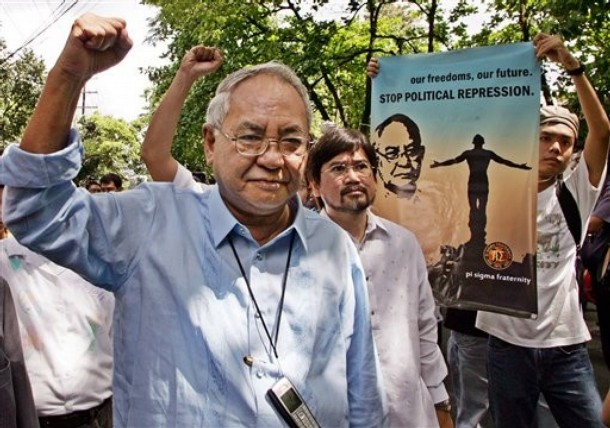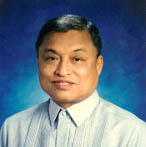
by Adriel Paglinawan
The Philippines may soon have its own version of Silicon Valley.
With funding from the real estate giant Ayala Land Inc.(ALI), the
University of the Philippines-North Science and Technology Park (UP-
NSTP) is set to radically change the premier state university.
Construction of ten low-rise office buildings and the S&T office,
which began early last year, is in full swing.
The project raises question whether it will enhance the
research and development capabilities of UP or merely serve as a
venue to augment the measly state subsidy.
Student leaders Regent James Mark Terry Ridon and University Student
Council Chairperson Shahana Abdulwahid voiced their opposition to the project. Ridon,
in an interview with the Philippine Collegian, said that the research integrity
of UP will be stained by commercialization.
According to university officials, the Park has two objectives:
first, is to make UP at par with leading global research
universities and second, is to generate additional income for the
university. According to the 25-year-contract, the university is set
to earn more than P4-billion from ALI as rent.

The master plan for an inter-disciplinary Science and Technology
Park was drafted during President Franciso Nemenzo's tenure. On June
2002, the Philippine Economic Zoning Authority (PEZA) and the Quezon
City Council approved the university's plan to establish a Science
and Technology Park.
It was in July 2005 when Board of Regents member Abraham Sarmiento endorsed the initial development of the
Commonwealth property. On the board’s 1,198th meeting, they created a committee to review proposals from corporations and
negotiate a lease agreement.
Three years later, the Board of Regents,
the university's highest
policy making body, approved ALI's proposal for the lease and
development of the 37-hectare UP-NSTP.
On June 2006, President Gloria Macapagal Arroyo issued Presidential
Proclamation No. 1132 designating Phase 1 of the UP-NSTP as
information technology area. According to a March 2 Inquirer report, the IT area is part of the 98.5-hectare UP property which
includes the Arboretum, a 12-hectare lush virgin forest, which will
be left untouched by the massive construction. When finished, the
Park will host IT and Business Process Outsourcing (BPO),
multinational corporations such as Hong Kong Shanghai Banking
Corporation (HSBC), International Business Machines (IBM) and
Convergys.

On Decemeber 2006, former BOR and Commission on Higher Education
head Carlito S. Puno inked the deal with ALI representative Jaime
Ayala at the UP Executive House in Quezon City. The agreement
authorized the country's real estate developer to construct
facilities on the NSTP and the 65-hectare South Science and
Technology Park along Katipunan Ave.
QC Mayor Feliciano Belmonte Jr., according to a Jan. 2007 UP
Newsletter report, issued an ordinance which classified the NSTP as
an area that will help the city become the country's Information and
Communications Technology (ICT) capital. He added: "The North
Science and Technology Park promises to be a magnet for fast
evolving high-technology companies that would prove essential for
the creation of a strong business and employment center in Quezon
City."
ALI announced that it will invest P6-billion to develop the Park
into a fully integrated IT and IT-enabled services community. The
country's largest property developer also noted that the NSTP will
be an "academe-based catalyst for technological innovation along the
lines of the Stanford University-based Silicon Valley Corridor in
the USA."
University officials also emphasized that the park will generate
employment for UP students. ALI representative Maria Carmela Ignacio in an interview
with the Inquirer, mentioned that the NSTP "will serve as a learning
library for the academe." She added, "Students, through internship,
will become exposed to the industry and the faculty through
consultancy."
Accoring to ALI's development plan, the ten low-rise office buildings
will be leased to corporate tenants which include
telecommunications, telematics, information technology , biotechnology and high-value
BPO companies. A village type retail strip, accommodating
restaurants, bookstores, coffee shops, service establishments and
public facilities will also be constructed in the park. Hotel and
residential facilities, which are part of the NSTP's second phase,
will also be integrated to the Park, ALI's statement read.
UP President Emerlinda Roman, during the Park's groundbreaking
ceremony, said that the research prospects and jobs generated by the
NSTP will help stem the "brain drain" and give UP graduates a reason
to stay in the country.
See related article on Toward the UP System: A Brief History of UP
See next article on Behind the Scenes: Preparations for UP Centennial
Back to UP at 100 section
|











